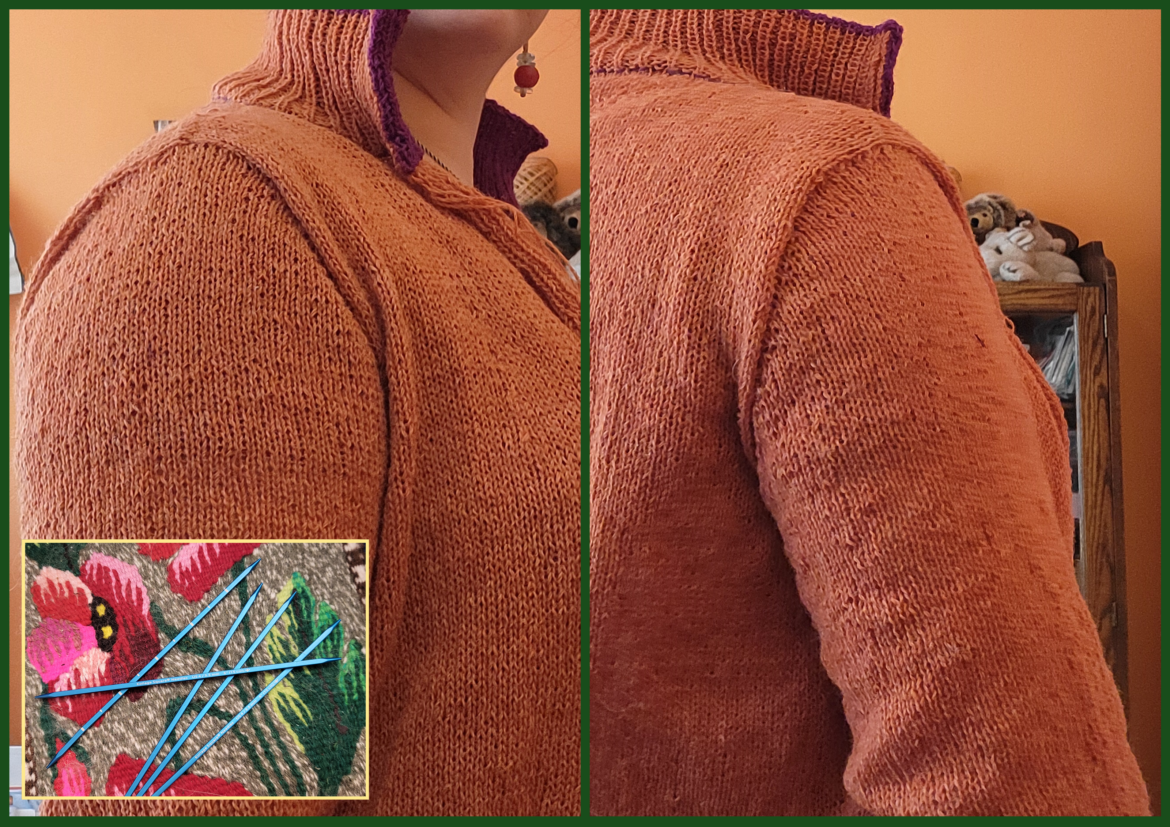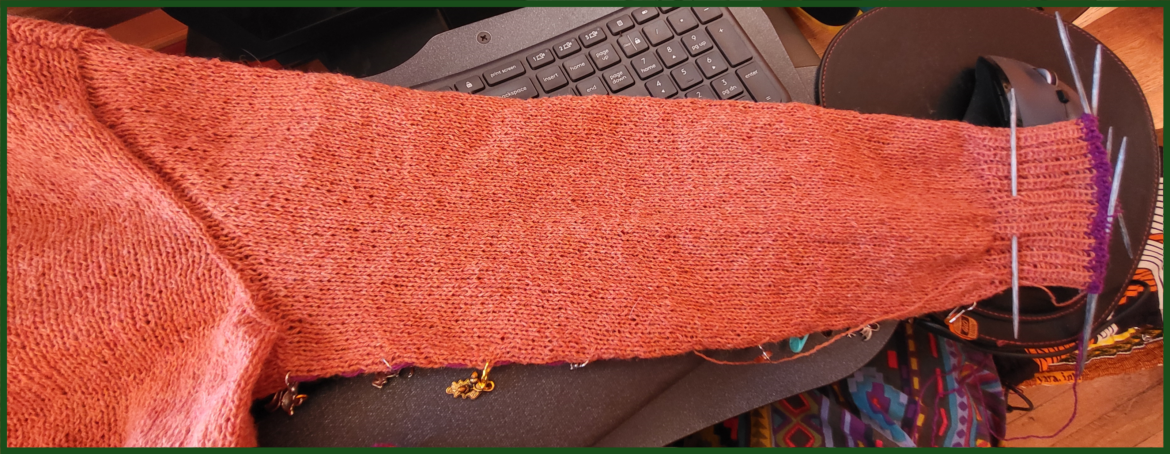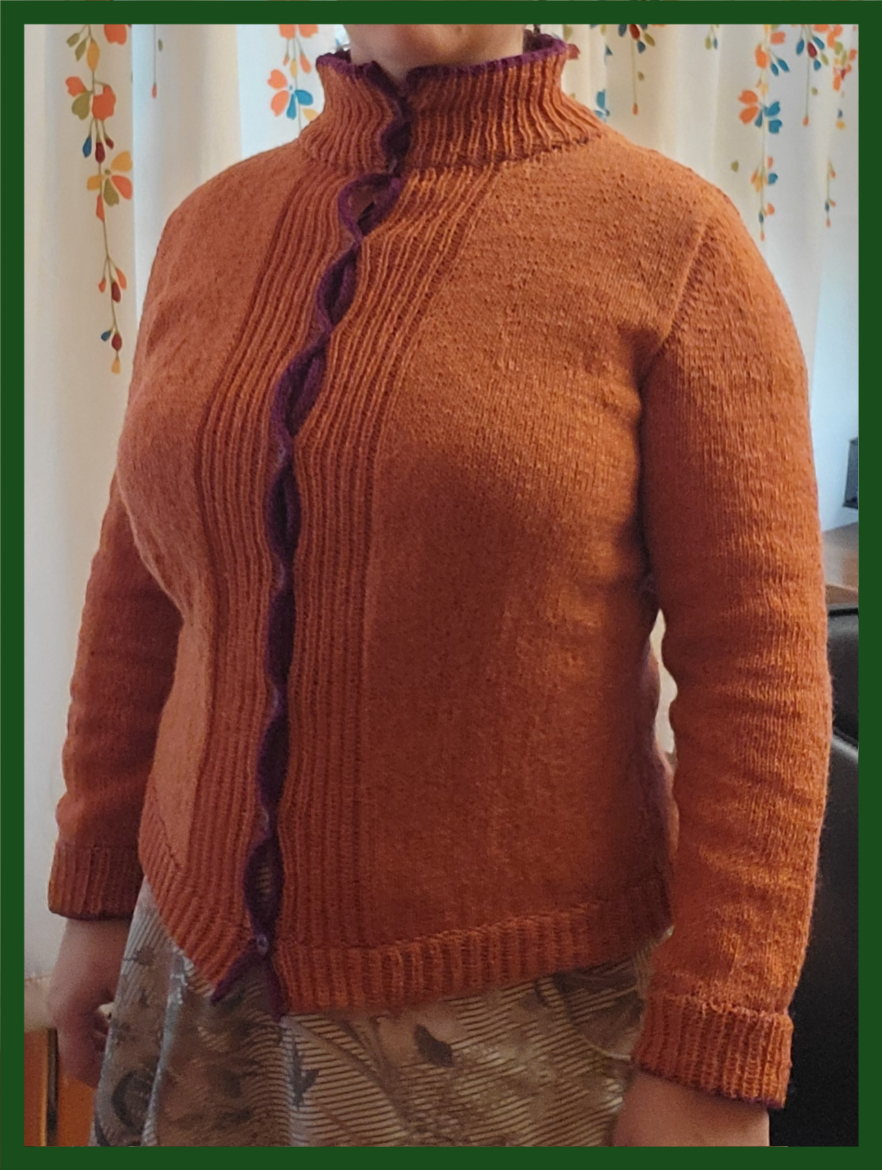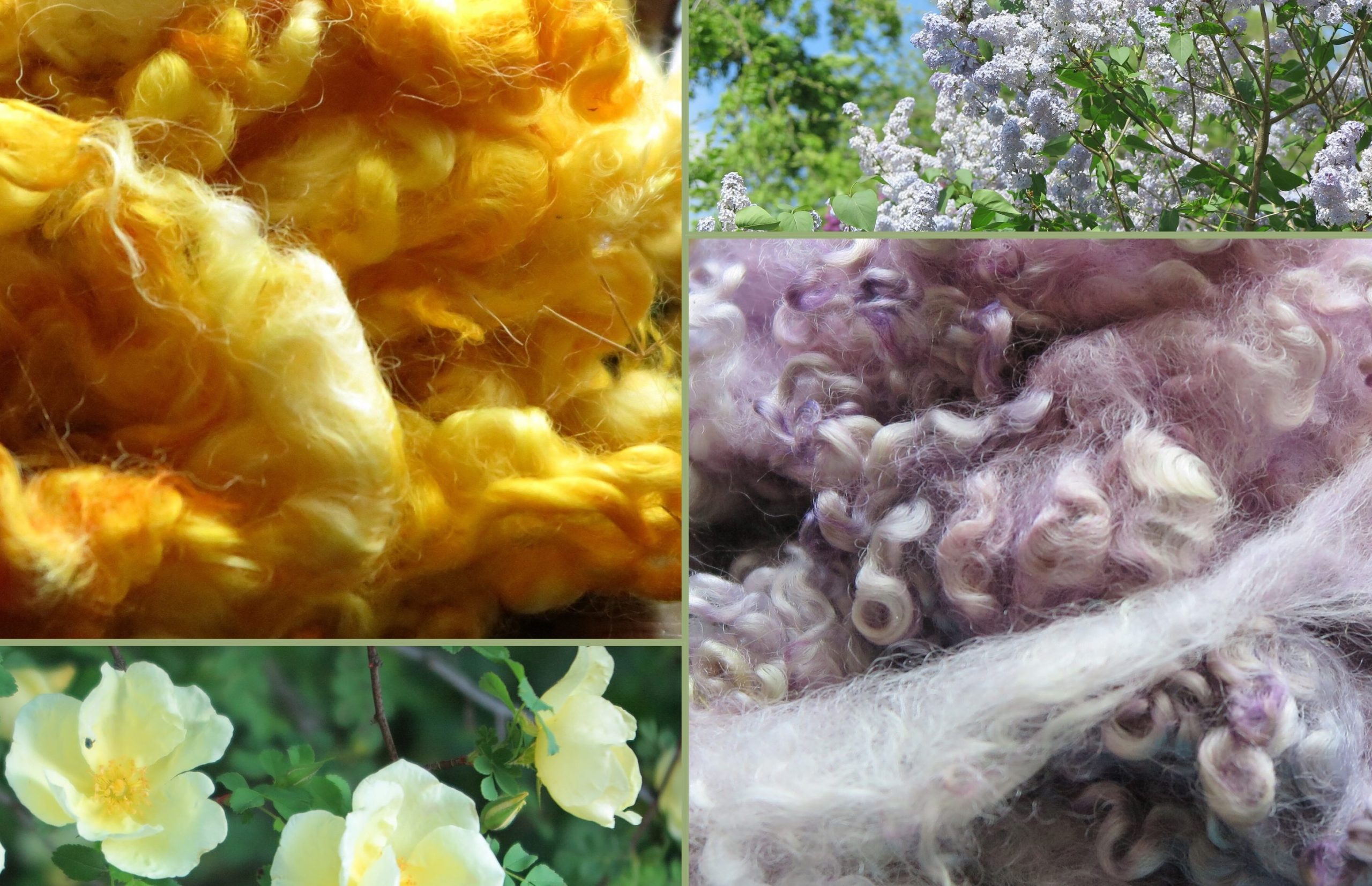It didn’t take long for me to know that I’d made the right choice to rip out the sleeve and start over with different needles. Literally, just picking up the stitches to knit the sleeve told me things were going to be better, and every row just further proved this out.
I’ve never used Kollage needles before. The brand was entirely new to me, but I have to say that I really like them, especially for the simple stockinette and ribbing I was doing here. The tips aren’t particularly sharp, so might be a struggle with complex lace work, but for churning through a stockinette sleeve? They were fabulous. They were comfortable both due to the lighter weight and the square shape. And the lighter weight meant that they weren’t pulling my stitches larger on the needles not being worked. Another cool fact – the parent company is actually a non-profit dedicated to providing employment opportunities to folks with disabilities / barriers to employment. I might get some 2mm for sock knitting – I feel like it might make basic socks fly.
Anyway… the almost finished sleeve is just so so much better. The gauge is right, the stitches far more even, and the first rows where I picked up the stitches of the body are just much tidier. In short, I’m not sitting here hoping that washing and blocking produces a miracle.

Part of the “fun” when I knit sleeves is reworking all the decreases. This is because I usually have to start a size UP for the upper arm, and go down two sizes to one size DOWN for the wrist. Because I have some sort of weird arms? And my forearms are kinda spot on I think for the sleeve size that corresponds to my sweater body size. So it’s gradual decreases down for the first 2/3rds or so and some more dramatic decreases for the last bit. As a sign that the gauge was wonky with the first needles – I found myself reaching the end of the sleeve faster than expected, and reworked the decrease back to more what I expected the 2nd time around.
All of this to explain – why I have a complex and detailed stitch marking process going on here. I am using the waste yarn row counting method I learned from Yarn Harlot of flipping the waste yarn back and forth ever so many rounds (every 4 here) for easy counting. And then a stitch marker clipped in at each decrease point, so I can see when I switched from every 16 rounds to every 12 rounds towards the cuff.

While I’ve knit this mostly at home, I use similar things for marking socks (might skip the waste yarn in repeating patterns). I’m always amused when somebody thinks that I’ve knit charms into the socks. I can’t imagine having a spiky little dragon between my sock and boot ankle. OUCH!
This sleeve has: a fox, a cat, an oak leaf and acorn, a moose, a bead, an orange heart, a teal plastic marker (showing where I went from every 16 to every 12), a dragon, a sea turtle, and a yarn cake. This sort of project is also why I don’t feel bad about how many little locking markers I have as I’ll need another ten for the second sleeve.
I got the sleeve displayed above done months ago (*cough* February and March *cough*), along with it’s matching sleeve. Then all the edging… and then I had to go in search of the right buttons and weave in all the ends. The arrival of fall weather finally got my behind back in gear, and I finished things up. Now I have a nice cozy sweater which is the right weight for fall. I even took it off long enough to wash and block it.

